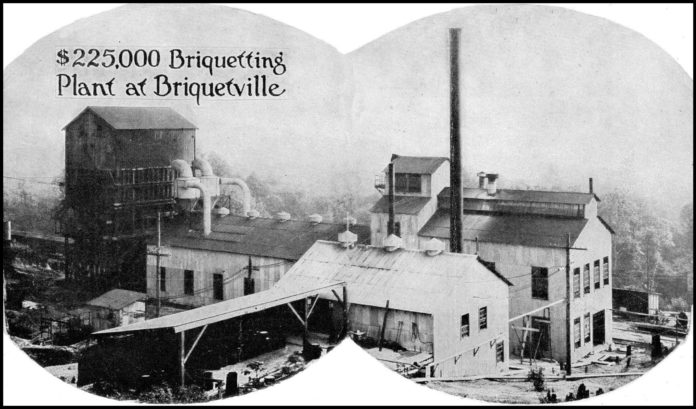For most readers, briquets (or briquettes) are the charcoal variety, for decades a staple of outdoor barbecues before the widespread introduction of gas grills. Briquette means bricked fuel. The first briquettes were invented by a Frenchman, named Marsais, who discovered a binder that could hold fine coal dust together.
In 1913, Pacific Coast Coal Co. constructed this plant in Renton at the present location of 903 and 915 Houser Way, just east of Lowe’s. The site was selected so ocean-going vessels could dock nearby in anticipation of the 1916 opening of the ship canal, connecting Lake Washington to Lake Union, through the Ballard locks to Shilshole Bay.
During that construction project, water levels were lowered nine feet and the Black River dried up. Four years earlier the Cedar River was diverted into Lake Washington by the City of Renton. The plant was also served by the Pacific Coast Railroad.
This briquet factory consisted of a crude oil distilling building, a power plant, drying, mixing, and conveying plant, plus bunkers for the storage of coal. The briquetting process consisted of combining fine-sized bituminous and coking coal with a 10% asphalt binding agent.
The mix was beaten and toughened, then subjected to 2,000 pounds per square inch of pressure to produce a 10-ounce “Diamond Briquet” with 12,500 BTUs. The Renton briquet plant operated until May 1939 before closing. In 1930, the Shuffleton steam plant, with three 148-foot-tall stacks, was built on 17 adjacent acres to the west and operated until 1989.
That Renton site is now part of Southport, a burgeoning commercial-residential development with a recently opened Hyatt Regency hotel. This image and research for the caption comes courtesy of JoAnne Matsumura, an Issaquah historian.








